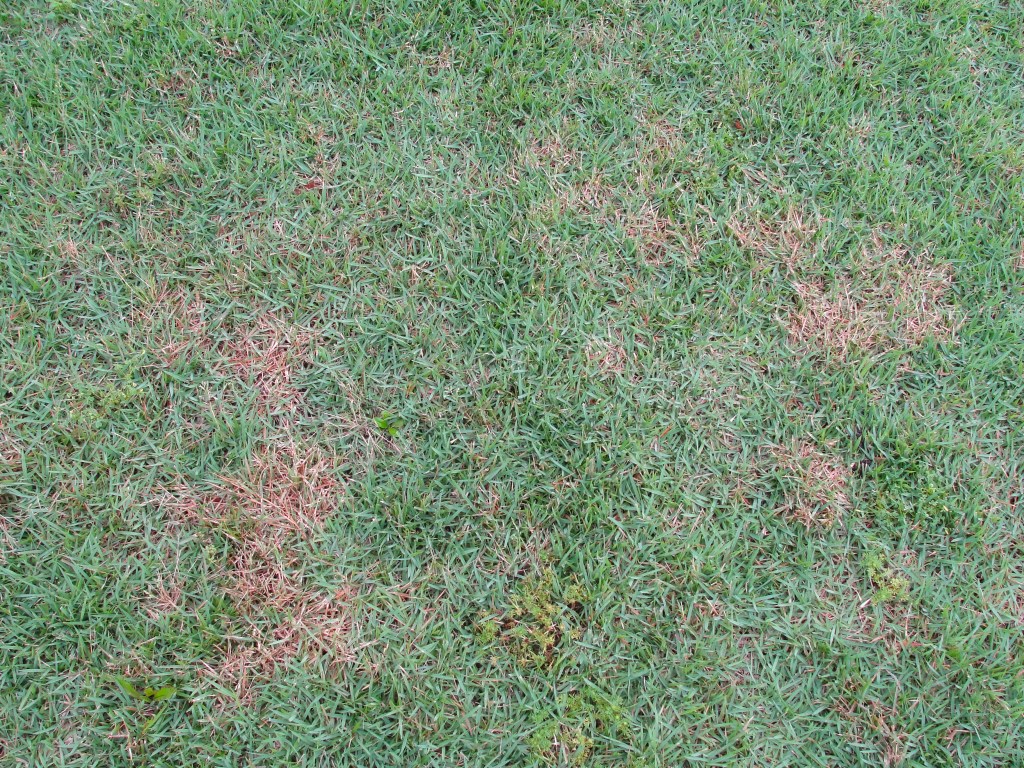Grant: Water smarter
Published 5:00 am Sunday, August 3, 2025

- Dollar Spot is a fungal disease on zoysia lawns caused by excess moisture. (Contributed Photo)
Recently my oldest brother sent me pictures of his zoysia lawn “burning up” despite his watering it three times a week along with additional water from the aerobic septic sprinklers. As I suspected, it was suffering from both brown patch and dollar spot fungus, caused by the water, not heat or drought.
Water is a precious commodity in Texas, and with a growing population, it will only become more limited. One of the easiest ways to conserve this valuable resource is by learning to water your lawn properly. Most homeowners, and commercial landscapes as well, irrigate far too often. This doesn’t just waste water, it encourages disease and can actually damage your turf.
Watering too frequently is one of the most common mistakes I see. Turfgrass thrives on deep but infrequent irrigation. Light, frequent watering leads to shallow root systems that dry out quickly and are more vulnerable to stress and disease. I see this year after year, especially on St. Augustine lawns with brown patch, gray leaf spot, and other fungal issues. Sprinkler systems left on automatic timers make the problem worse, especially when they run while it’s raining or when it’s too cool and moist for lawns to even need water.
Trending
I recommend turning your irrigation system to manual and only watering once each week during the hottest summer months, June, July, and August. Your lawn only needs about one inch of water per week from irrigation or rainfall combined. That’s just twelve irrigations per year. Lawns in East Texas don’t need watering in the fall, winter, or spring when rainfall is typically adequate and temperatures are less demanding. Keep your sprinkler system off and only turn it on when your grass actually shows signs of stress.
You’ll know it’s time to water when the grass starts to look dull or grayish, when footprints linger after walking, or when the blades begin to fold or roll. When that happens, give it a deep drink. Water early in the morning, not in the evening, when cool temperatures and long periods of wet foliage encourage disease. Fungus thrives on damp blades, and I see brown patch and gray leaf spot on St. Augustine and dollar spot on Bermuda and zoysia all the time in overwatered yards.
The type of grass in your yard also matters. Bermuda, which originates in Africa, is the most drought-tolerant and can often go the whole summer with little to no irrigation if established well. Zoysia is next, followed by centipede and then St. Augustine, which needs the most water and is the most disease-prone if watered too frequently.
Regardless of grass type, you need to water deeply enough to soak the soil to a depth of six inches. Use a shovel to dig a small hole and see how far the moisture has penetrated. You can also place baby food, cat food, or tuna cans in different spots to measure the actual amount applied. You want to aim for 1 to 1.5 inches per application. I find that most homeowners don’t apply nearly enough during a watering and instead end up watering too often.
With a little restraint, East Texans can grow lush, healthy lawns and still protect our water supply. The key is watering smarter, not more often. Keep your system on manual, monitor your lawn, and save water, time, and money in the process. We’ve had a reprieve with rainfall and temperatures this year and as I write this, I haven’t irrigated my St. Augustine and zoysia lawn a single time.
— Greg Grant is the Smith County horticulturist and Master Gardener coordinator for the Texas A&M AgriLife Extension Service. He is the author of Texas Fruit and Vegetable Gardening, Texas Home Landscaping, Heirloom Gardening in the South, and The Rose Rustlers. You can read his “Greg’s Ramblings” blog at arborgate.com, his “In Greg’s Garden” column in Texas Gardener magazine at texasgardener.com or follow him on Facebook at “Greg Grant Gardens.” More science-based lawn and garden information from the Texas A&M AgriLife Extension Service is available at aggieturf.tamu.edu and aggie-horticulture.tamu.edu.







